CALCUTTA VOTES BUT BENGALIS DON’T MATTER
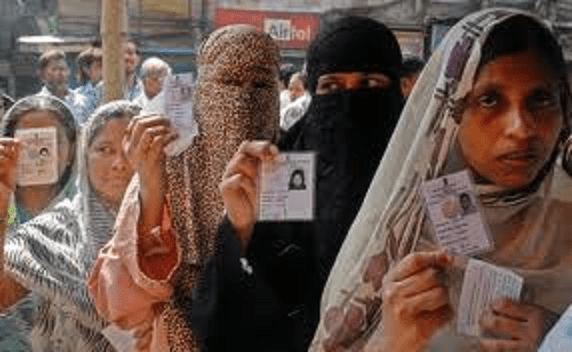
Outside of West Bengal, Saffron Wave Appears Unstoppable
While it may not make a huge difference in the national tally for Narendra Modi’s Bharatya Janata Party (BJP), which polls are showing will form the largest party after election results are known, Modi urged the party machine to get the vote out in West Bengal on May 12th. This may seem like wasted effort to some; indeed, Bengal was written-off by Modi’s predecessor in favour of the more contentious and influential battlegrounds of UP and other Central vote banks during the last election.
The plan, this time, is to take the fight to heart of anti-BJP forces in an effort to try and split the main political forces in West Bengal, the ruling Trinamul Congress, The CPI (M) and the Congress Party of India. All of these ‘secular’ parties, are courting the Muslim vote, which until recently has tended to vote as a block. Not so, this year. The community, once a monolith, has shown signs of becoming fractious as economic issues become have more prescient in the wake of ten years of hardship under Congress.
Fielding star candidates in the entertainment world, the ‘secular’ parties are pulling out all the stops to try and gain as much influence at the centre in whatever national coalition is formed after the election results are announced. While there is some merit to this strategy: people by nature become star-struck by such personalities, it is increasingly being viewed as a desperate ploy especially by India’s massive young population, whose collective memory does not wax nostalgically for their parents’ matinee idols or playback singers.
In the critical battleground of Old Calcutta, tensions are running high. Sitting MP Sudip Bandyopadhyay of TMC is facing a tough challenge from former PCC chief and seven-time Congress MLA Somendra Nath Mitra, state BJP president Rahul Sinha and CPI(M)’s Rupa Bagchi in this Lok Sabha riding that has come to typify the old politics in the city.
The Gulleys ‘Galis’ as they are called are readying for a battle, narrow side street by side street, each having their own strongman running the rank and file. But Bandopadhyay’s optimism is unshakable, whether based on polling intelligence or mere bravado. “Everything is fine and I will double my margin this time. I know the constituency like the back of my hand and have nursed it well,” he says.
“I have been the leader of TMC in the Lok Sabha and people are aware about my performance there,” he puncutated.
All the seven assembly segments in this Lok Sabha seat, including Chowringhee, Entally, Beleghata, Jorasanko, Shyampukur and Maniktala, have TMC MLAs after the May 2011 result.
North Caclutta has remained the political apex of the city for centuries from where it grew and flourished as a modern cosmopolitan city. The constituency is home to some prestigious institutions like Calcutta University, Scottish Church College, and Star Theatre, among others. And from Presidency College, Coffee House, and College Street the left ideology of the city evolved.
The constituency is home to nearly 14 lakh voters (1.4 million) of which at least 35 per cent are Muslims concentrated in areas like Rajabazar and Belgachia. CPI(M)’s Rupa Bagchi, 48, the lone woman among the 18 aspirants for the seat, claims to have solid support from Urdu speaking women. This demographic is key as so much of the Muslim voting block in Bengal is not of Bengali origin.
“From the number of visits I have made so far in the constituency, I am getting a very positive response,” she added.
The battle for Calcutta North, which covers 60 of the 141 wards in the Calcutta Municipal Corporation (CMC), is significant as the outcome will have an impact on next year’s polls for the civic body. At present, Trinamul has 38 councillors out of the 60 in the constituency.
facebook symbol – Google Search
Bandyopadhyay
“Trinamul is facing an element of anti-incumbency in the constituency because Calcutta North is represented by Trinamul and the civic body also belongs to them. It is helping me as I am
focusing on their failure,” said Rupa, who, according to sources, was the choice of Buddhadev Bhattacharjee. She is also the leader of the Opposition in CMC.
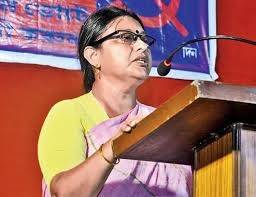
Rupa Bagchi
“A majority of Urdu-speaking Muslims are aligning with the Congress as they are sure that the party will not have any deal with the BJP,” said a schoolteacher and a resident of Ward 62. Others wonder if this is an entirely practical strategy. “In another ten years, where will I be, if I don’t have any engagement with the corridors of power?” says Muhammed Khan, a clothing wholesaler.
Local Congress leaders are trying to convince the voters that Bandyopadhyay failed to resolve the controversy over building a club by encroaching upon land belonging to a place of worship in Taltola. The issue has become a talking point.
Bandyopadhyay — with the help of Ahmed — has tried to counter the whisper campaign by holding several meetings in the area in the past few days.
Sources in Trinamul admitted that they were aware that a split in minority votes was inevitable.
WHY MAMATA SNUBBED RABINDRANATH
The numeracy of the Muslim linguistic divide perhaps explains why the Chief Minister, the prime mover behind declaration of Rabindrajayanti as a national holiday, singer of Rabindra Sangeet at functions, and reciter of Kabi-Guru’s poetry, a self-proclaimed impresario of ‘Bangla culture’ \ was relatively silent during this year’s festivities, which began on Friday. She does not want to antagonize non-Bengali speaking Muslims for whom Tagore matters little. Culture has been cast with a big “C” in the Chief Minister’s calling card, but today, it is absent. Her priorities are simply on the numbers. After all, a few nice words about Tagore when the mood is better, will ingratiated her, once again wth Bengali arts crowd, and television personalities – but a move to embrace Bengali pride right now could be fatal with those, Muslims, in particular, who view Kolkata as their city, the KKR as their team.
Touting Kabi-guru’s name doesn’t do much even in the Bengali Hindu community as Poll managers of all the candidates acknowledged in private that the BJP vote share would witness a significant spike. Marwaris, Gujratis, Punjabis – they want to discuss economics, not culture. “If the states’ fortunes improve, culture will follow” says Devopriya Roy, author of The Heat and Dust Project, a travel book, she is co-writing with economist husband Saurav Jha. Again, for non-Bengalis, Tagore does nothing to elicit political fervour. But precinct captains cannot agree on on which party would suffer the most in the zero sum game of gain for some and loss for others.
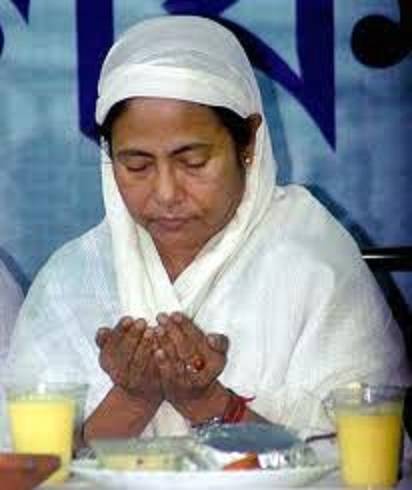 Mamata Still going for the Muhummedan Garb as she shuns Tagore
Mamata Still going for the Muhummedan Garb as she shuns Tagore
CPM sources said that Trinamul would be the biggest loser amongst the non-Bengali Hindu vote because of the BJP surge and the undeniable ‘Modi factor’. The polarizing figure is immensely popular among his proponents.
This explains the unprecedented focus of the BJP and its leader in a state, which it is sure to gain not much more than only a single seat. Today’s BJP is no longer the short-sighted party of the late Prahmod Mahajan’s “India Shining” campaign; they are angling for the fractious future – an environment in which fissures along voting lines will not produce the kings of the past but the dukes, lower lords, who will have to curry favour at the Centre no matter who is in power. And, the BJP has demonstrated by refusing to be held hostage to Nitish Kumar in Bihar, that they can work with anyone. The days of minor parties holding a gun to the head of the national parties constitute an era, which they seek to eradicate.
THE JADAVPUR CIRCUS
Jadavpur was initially touted as a battle of intellectual heavyweights pitting former Harvard Don Sugata Bose, Grand Nephew of Netaji and son of three time MP Krishna Bose, against Marxist leader and Jadavpur Engineering Professor Sujan Chakravarti, who says that his views ally his thinking to Netaji more compellingly than connection that a scion of the Bose clan may have by mere blood. Now the constituency is a blood bath. An activist painter allied to Trinamul has come out against Bose, and the remaining Bose family (who are at odds with Sugata on the battle to release secret information about Netaji’s post-1945 disappearance, have accused him of being a child abuser because he has cynically used a 10 year old kid in a Netaji style uniform as a prop in his campaign.
Under the banner of “The Open Platform for Netaji”, they alleged that Sugata Bose was subjecting a child to potential risks by parading him in military uniform in an election environment. They complained that it is a violation of the principle of child protection and militates against key provisions of NPCR’s citizen’s charter concerning child protection and safety This smacks of irony as Bose has been tasked with a mandate of reinvigorating the youth through primary education.
“Since a core mandate of your commission is to inquire into complaints of violations of child rights and recommend initiation of proceedings in such cases, we are hopeful that you will look into this matter without delay,” a letter signed by Bose family members and others from Open Platform said. The Bose family, it seems, is nothing if not civilized even with an adversary in its clan.
The family members had recently objected to his using the name of Netaji and his slogans to woo voters. In a recent letter to the Election Commission, they also alleged that Bose had been conducting his poll campaign in Jadavpur constituency accompanied by a child, wearing spectacles and uniform like Netaji. They had demanded that the name of Netaji should not be used for political campaigns and to seek power.
Open Platform is also amazed that, as an ‘eminent’ history professor he shows no interest in the history of declassifying files about what happened to Bose. Note a single farthing of the considerable funding his Netaji Research Centre gets from the Indian, Japanese Governments and other interests has been spent on unearthing the questions with which the Center has wrestled in no less than three public inquiries, the last concluding that no air crash took place in Formosa, hence Bose could not have died in 1945. His political ambitions have been touted as the main impetus for his lack of intellectual vigour on this issue. And, let’s remember that his grandfather was Nirad Chowdhury who has been accused of being a British spy, resulting in Sarat Bose’s arrest – enough said. This may be a non-starter as no the issue as there is plenty of complicity and blame to spread around, so the other parties, don’t want to touch it.
The BJP has said nothing about Bose’s Pakistani wife but she is nowhere to be seen in the campaigning. Perhaps he would have better paraded her in North Calcutta! According to party officials, she has nothing to do with a campaign in Indian politics (unlike Hilary and Sonia?)
The full story on the Jadavpur battle is available on Firstpost:
OUTSIDE OF CALCUTTA, TMC STUGGLES TO CONTAIN BJP PUSH IN 30 SEATS
The TMC is desperate to bag 30 seats, outside of the metropolis and months ago, this seemed like a given except that, in a bold and risky move, Narendra Modi has aggressively campaigned in the state. Despite his being made out to be the anti-minority bogeyman, people aren’t begging off. They are tired of 10 years of a ‘secular’ slide, and want to give anyone a try, who might lift fortunes.
Trinamool expects two-three seats (Cooch Behar, Darjeeling and Balurghat) out of 10 in North Bengal but claims to have taken control of the game in the third phase, aiming to rout Left in at least eight of nine constituencies. The Left puts its score at four in the third phase. Going by what leaders say Trinamool and others are equally poised in the first three phases.
But this means Trinamool is in a do-or-die battle in the last two phases to hit the 30-mark.
This wouldn’t have been a big deal for Trinamool, given the minimal Congress presence in south Bengal and the Left slide. What bothers Mamata is the saffron surge that is the buzz across Bengal. In as many as 8 seats — Asansol, Krishnagore, Bongaon, Barasat, Barrackpore, Dum Dum, Kolkata North and Jadavpur — BJP has thrown in everything to queer the Trinamool pitch, even if its candidates fail to win any of them.
Modi has raised his saffron scimitar, and he is not afraid of using it to hack away at the margins of Ma Mathi and Manush, as well as the Congress Hand. HIHe has been to Serampore and Asansol and is coming to Barasat, Krishnagore and Kankurgachhi (Kolkata North) on May 7 before they vote on May 12. These are apart from constituencies like Basirhat, Joynagar, Mathurapur and Bankura where Trinamool faces an LF challenge.
Sensing anti-incumbency and a saffron surge in south Bengal, Mamata is gunning for Modi, fearing BJP will cut into her vote bank. LF chairman Biman Bose too has been targeting BJP — leaving out Congress — in the last two phases.
Modi isn’t in a mood to miss out on this opportunity. He is eyeing some south Bengal seats, harking back to the Jana Sangh days when Shyamaprasad Mookerjee won Calcutta South West in 1952, and Haripada Bharati polled 24.34% votes in Calcutta North West in 1967. State BJP president Rahul Sinha is confident of wresting Kolkata North from Trinamool.
Even the cadre in the street is sounding tired. Congress has been giving the same old speeches on Babar, Humayan and Akbar, the benefits of dynastic continuity – nobody is buying it; The TMC is campaigning against Modi full force, claiming only Didi can save the minorities but minorities have not seen much improvement under her rule; and CPI(M) just doesn’t have the numbers to make a mark.
THE GLOBAL CALCUTTAN PREDICTS NDA WILL FORM THE GOVERNMENT
This is why Modi’s has made a final appeal to voters came hours before a landmine blast killed seven police officers on Sunday, May 11, in the country’s insurgency-racked centre, amid stepped-up security nationwide before votes are counted and results announced on Friday. He urged voters not to be cowed down, and invoked saffron pride to turn the tide of terror.
The world’s biggest election, held in phases over five weeks, is expected to propel Modi, a Hindu nationalist hardliner from the main opposition Bharatiya Janata Party (BJP), to power.
“People are tired of false promises, corruption and the same old tape-recorded messages ridden with dynastic references only to hide one’s own failure,” Modi said in a blog late Saturday.
“They want a better tomorrow and NDA is the only alliance that can provide this change,” Modi said, referring to a BJP-led National Democratic Alliance coalition.
“I urge all those voting in the final phase to vote in record numbers, especially the youth,” he said.
Campaigning ended on Saturday in the election that is likely to see Congress — whose campaign is headed by Rahul Gandhi, scion of India’s most famous political dynasty — ousted from power after 10 years.
Politicians were barred from making speeches or taking to the hustings on Sunday, one day before 66 million people are eligible to cast their ballots in 41 seats in the final stage of the staggered voting.
Opinion polls show voters have turned against Congress over massive graft scandals, spiralling inflation and a sharp economic slowdown during its two terms heading a left-leaning coalition government since 2004.
The BJP is expected to win the most seats in the 543-member parliament when results are announced on May 16. But it will likely fall short of an outright majority, meaning it will need to forge a coalition with regional parties.
The campaign has been marked by deadly, sporadic violence. The seven police were killed when their vehicle hit a landmine blamed on Maoist rebels in the central state of Maharashtra.
The Maoists have called for a boycott of the election and vowed to disrupt the mammoth process.
THE BOGEYMAN OF THE WEST
For the past few months now, when we at TGC have been ‘googling’ the Indian election on foreign versions of the popular search engines, we have found stories rife with criticism of Narendra Modi, some comparing him to Hitler, Stalin, and Saddam Hussain combined. These are typically in countries with large Islamic minorities like the UK. (It is a sanctimonious view, denying the history of the west’s never cooperated with despotic leaders in the past).
But do the epiteths ring true? Two decades ago, these were the same accusations being levied at L.K. Advani, who since then got into trouble during a trip to Pakistan in which he extolled the virtues of Mohammed Ali Jinnah, father of that state.
This is something that irks veteran journalist Mark Tully who, born in Calcutta, has deep roots in India spanning more than fourtyyears. “As long as they can make the debate about secularism vs. Hindudtva, the Congress can scare voters into place. But that’s not happening.”
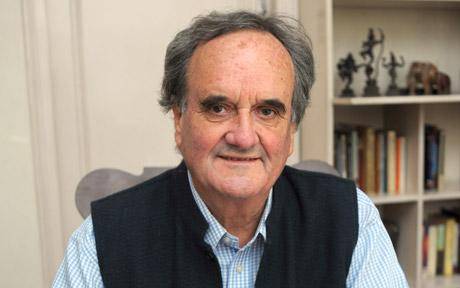
Renowned Journalist, Author, and Global Calcuttan, Mark Tully (he was born in the city)
Modi is accused of failing to stop the massacre of some twelve to fifteen hundred people, around eighty percent of them Muslims during a retaliatory riot for the killings (burning alive of 58 Hindu pilgrims on a train). I asked Mr. Tully during an exclusive interview earlier this yeaer whether such revenge killings were unusual in the context of state politics, and whether the scale actually makes Modi rise to the level of devil. He remarked that Congress did the same thing when Sikhs were massacred en masse after Indira Gandhi was assassinated in 1984. Mentioning that Rahul Gandhi had said that the Sikh killings were stopped and Godhra wasn’t Mr. Tully’s response is glib “That is utter nonsense. They stopped the killings against Sikhs after maximum carnage was achieved, and the fact that they were able to do so very quickly – let’s remember they had the army at their disposal whereas Modi did not – demonstrates that they could have stopped the carnage much earlier. In fact, arguably, what Congress did in 1984 was worse than what Modi failed to do in 2002. In sheer numbers, around 10,000 Sikhs were killed to one thousand Muslims in Godhra, a difference of ten fold. Does that mean that one muslim is worth the lives of 10 Sikhs as far as electoral politics is concerned? “Yes, says the World Sikh Organization” who is trying to keep the orchestrators of the massacre like Kapil Sibal out of the United States just as similar campaigns were organized for Modi.
Tully continues: “Moreover, it is wrong for any group to murder innocent civilians, whether they are Sikh shopkeepers or Hindu Sevaks – why should a population stand idle when the press reports that nearly 60 religious workers were burnt alive in what would likely have been one of the most cruel and painful ways to die! Would this not cause a riot in other countries?”
In fairness to Modi, he had just come to power, and was still leveraging his hold over the civic machine. Others accuse him of calling up Muslim leaders and taunting them before ordering their bodies to be hacked to death. There has been no evidence of the latter, and Modi was absolved in an inquiry on the matter. But he remains the bogeyman
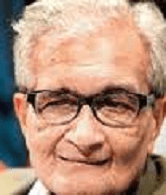
Sen and his selective outrage
Nobel Laureate and professional opiner, Amartya Sen remarked that he was not in favour of Modi’s premiership, and when asked the credentials of Rahul Gandhi to rule, given his avoidance of responsibility, a lack of running any ministry despite ten years of Congress governance, he remarked “I knew him as a nice affable young man at Harvard.” Hardly a ringing endorsement of his capability to lead; still, he goes at great pains to say what nice guy Rahul is.
Interestingly, Sen, champion of minorities uttered not a single word in criticism of the Congress Government during the Sikh massacres of the 1980s unlike his colleague Jagdish Bhagwat another prominent US-Based economist. The words of Edward Said about the industrial academic being vested with the corridors of power and the organic intellectual who seeks knowledge for its own sake become especially prescient when considering this situation.
THE HUMBLE CHAI SELLER
Modi, 63, the son of a tea-stall owner who has pledged development, investment and jobs to revive the struggling economy, sought to strike a note of unity in his last message to voters.
“We can decide whether we want to fight each other or we want to unite to fight poverty? The former will lead us nowhere while the latter will take our nation to greater heights,” he said in his blog.
 Narendra Modi with folded hands
Narendra Modi with folded hands
The campaign has sparked claims by Rahul Gandhi and other Congress leaders that Modi will widen divisions between the majority Hindu and minority Muslim communities if elected.
Rahul Gandhi, 43, ratcheted up the rhetoric on Saturday, saying Modi “only wants to divide people, make people fight each other”. He was speaking during final campaigning in the holy Hindu city of Varanasi which votes on Monday.
Gandhi, whose family has produced three prime ministers, sought to muster a final show of strength in Varanasi, which has become a focus of national attention between two star candidates.
Modi is battling in Varanasi against anti-corruption campaigner Arvind Kejriwal, who vaulted to national prominence as leader of the upstart Aam Aadmi — Common Man — Party. His campaign has resonated with voters angry at endemic corruption in government and in everyday life.
Congress, which has dominated Indian politics since independence in 1947, is given little chance in Varanasi.
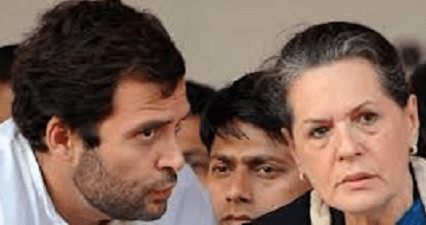
Gandhi, whose lackluster leadership of the Congress campaign has drawn criticism, admitted the BJP has been better at “marketing itself”. But he felt that Congress was doing better in the ‘old ways’ of reaching the masses.
“I am confident that the voters will give a mandate to an inclusive, fair and unifying government that the Congress party offers,” he told the Hindi-language newspaper in an interview published on Sunday
 The Global Calcuttan Magazine
The Global Calcuttan Magazine 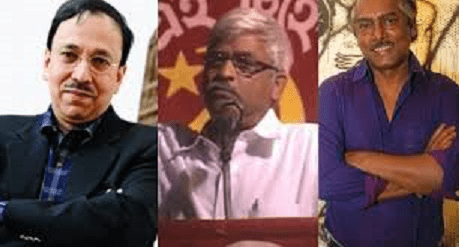
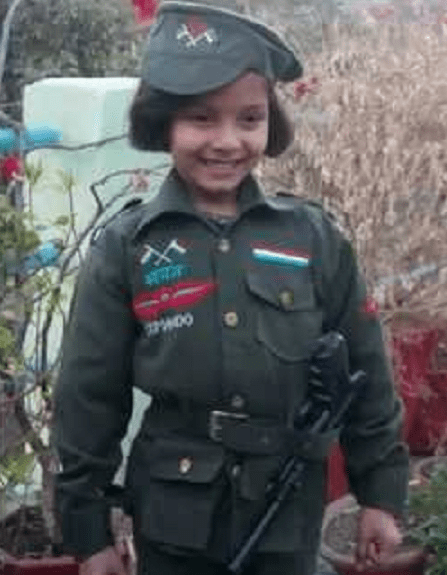
Excellent analysis
gutsy article. Needed to be said!
Great analysis! I wish the mainstream newspapers would focus on the ideas and the issues rather than the ground politicking!